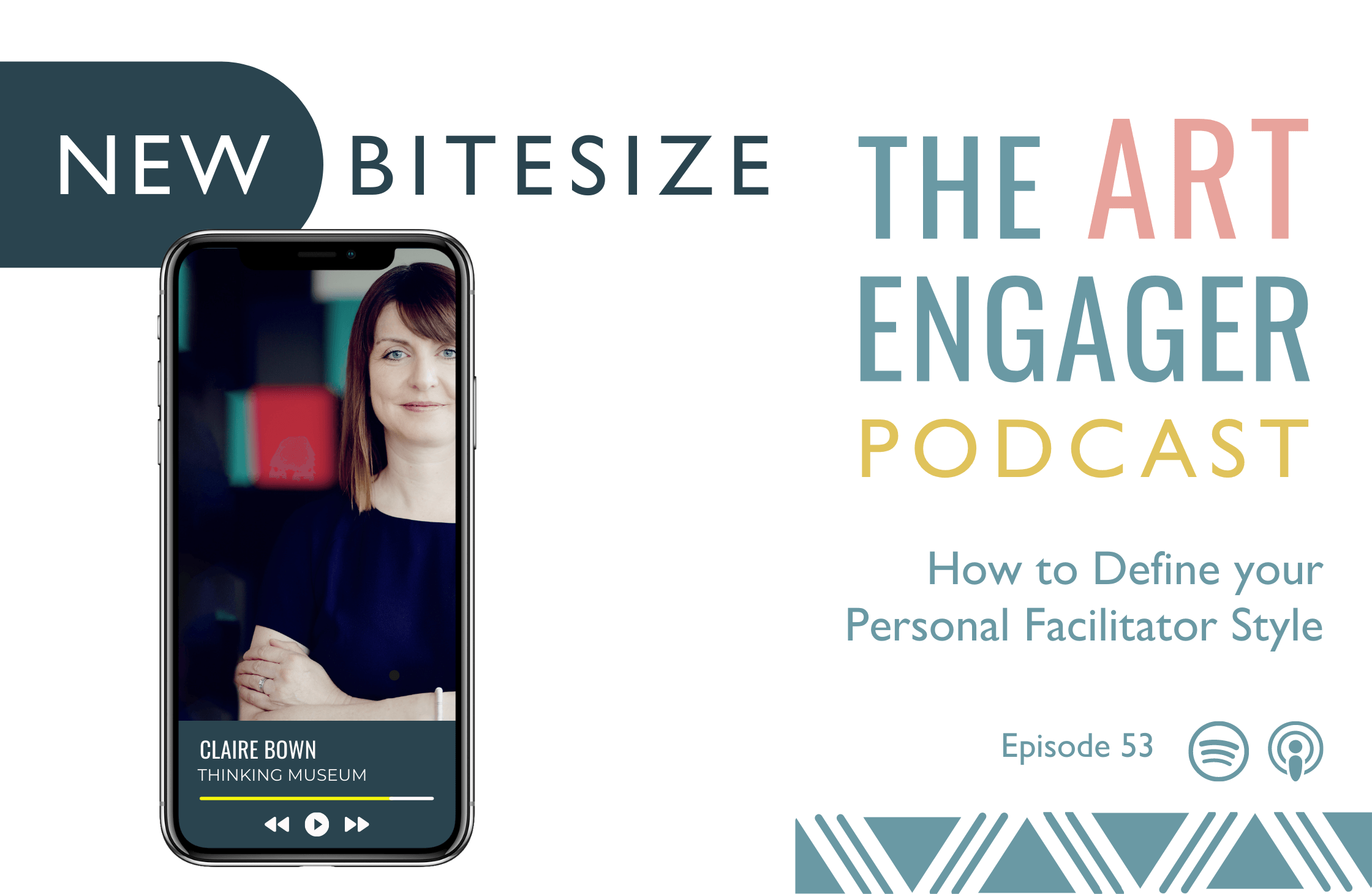I’ve recently taught a course about developing your personal facilitation style.
We’ve had 4 classes over the last 4 months and we’ve covered a range of subjects in our time together. In the very first classes we explored what our personal facilitation style is and how we might define it.
Listen to this episode on The Art Engager podcast or read the blog below:
Let’s take look at what a personal facilitation style is and why it’s important.
WHAT IS A PERSONAL FACILITATION STYLE? AND WHY IS IT IMPORTANT?
Even if you’re just starting out as a museum educator, guide or facilitator, you have a style (even if you don’t think you do!).
This is the way we show up and the things we are known for.
It’s also about how we see ourselves and how others see us too.
Every time we start a tour or an educational programme with a group, we are communicating something about ourselves.
Your group, your participants will also be reading you as you do your job. So, it’s important that we all spend some time thinking about whether our groups are perceiving us as we want to be perceived.
Your unique personal facilitation style is what makes you stand out as an educator, guide or facilitator.
As you draw on your toolbox of techniques, tools and methods, all the experience and experiences you bring with you, your own way of connecting and communicating with groups – all of this is what makes you, you.
It’s your USP and how you do it will be different to how your colleagues or peers do it.
So, it’s what makes you stand out and uniquely you. It’s important to know what your particular brand is.
Self-awareness – knowing yourself – and self-management – choosing our responses and behaviour – are important in our work. These form the foundations of emotional maturity, gives us more stability and makes us more effective at what we do.
Knowing what your own personal style of facilitation is part of this. When you facilitate truly as yourself, you can connect better with your audience and design and lead more engaging experiences.
It’s important to note too that your style will change and grow as you change and grow. My facilitation style is not exactly the same as it was 10, or even 5 years ago. But whether you’ve been doing this for years or have just started out, it’s never too late to do some work on defining your personal style.
TRY THIS EXERCISE
So, let’s do a quick exercise to help you to define your personal facilitation style. Go and grab a piece of paper and a pen or pencil. We’re going to do a quick brainstorming exercise.
- Start a fresh page in your notebook. In the middle of the page write personal facilitator style.
- Brainstorm and write as many words as you can about your style. Give yourself 3 minutes.
- Now, group the words together. Highlight and seek out words or themes that stand out. Are there any themes? What words or phrases demonstrate your uniqueness? Use colour to make links between your words!
- Reflect on what you wrote and the themes that came up. What did you find interesting or challenging about this exercise? What insights does it give you about your unique facilitator style?
TIPS
- The aim is to go for volume when you’re brainstorming. Write down as many words as you can. You can pause this episode to complete this task (or come back to it later if you’re out walking, running or driving!). Set a timer for 3 mins.
- Write down as many words as you can around the page. Keep writing! Don’t stop to judge or think too hard about the words you’re writing. You can write down each word or phrase on a post-it if you want or on your piece of paper. Post-its are easy to move around when we get to the next part or you can draw lines to make connections.
- I would recommend doing this exercise with a group of colleagues too – then you can share together the themes and words that came up for each of you and share your word clouds together. This may give you more inspiration so that you can add to your brainstormed list of words.
YOUR PERSONAL FACILITATION STYLE
So, that’s it, this is the first step towards defining and developing your personal facilitation style. You can revisit this exercise every year to see what has change or how you have grown over the past 12 months.
Sign up for my Curated newsletter
Every other Friday I share a small dose of curated inspiration. It might be things I’ve read, things I’ve listened to or things I’ve watched.
Hear about my latest podcast episode and read useful tips, recommendations and things that I love. Join via the button below.
